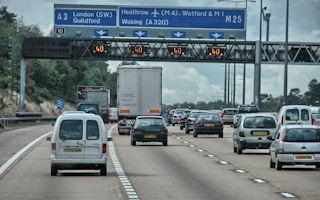Cars are one of the biggest threats to the planet. The transport sector accounts for more than 60 per cent of global oil consumption and about a quarter of energy-related carbon emissions, and it’s seen as harder to decarbonise than other parts of the economy. Typical forecasts of future world vehicle ownership point to substantial increases, particularly in the developing economies.
But the problem of transport-related greenhouse gases may be less than generally thought. There is emerging evidence that individual car use, as measured by the average annual distance travelled, has ceased to grow in most of the developed economies, starting well before the recent recession. In some countries, it may already be declining, a phenomenon known as “peak car”.
A number of factors could could contribute to this trend. Suggestions have included a decline in younger people holding driver’s licences, changes to company car taxation and technological constraints that stop us travelling faster on roads. And it may be we have simply sufficient daily travel to meet our needs.
There has also been a shift away from car use in urban areas. This could be particularly important in a world where future population growth will be mainly urban and densely populated cities are seen as a driver for economic growth.
City living
For example, over the past 20 years the population of London has been growing and incomes have been rising, but car use has held steady at about 10m trips a day. This is mainly because the city has not increased road capacity but instead has invested in public transport. Most importantly, rail offers speedy and reliable travel for work journeys compared with the car on congested roads. This gets business and professional people out of their cars, which makes the city a less congested and more agreeable place to be.
With a growing population but static car use, London has seen a marked decline in the share of journeys by car, from 50 per cent of all trips in 1990 to 37 per cent currently. With continued population growth projected and more investment in rail planned, the share of trips by car could fall to 27 per cent by mid-century. There is every reason to suppose that London will continue to thrive as car use declines – and perhaps because car use declines.
This decrease in car use from 1990 was preceded by a 40-year period of growth from 1950, the result of rising incomes leading to increased car ownership – and, at the same time, a falling population as people left an overcrowded damaged city for new towns, garden cities and greener surroundings. So we see a marked peak in car use at around 1990, the time when the population of London was at a minimum, which was when attitudes to city living began to change.

Metz, D. ‘Peak Car in the Big City: Reducing London’s transport greenhouse gas emissions’, Case Studies on Transport Policy, 2015 (available online)
Wider phenomenon
This phenomenon of peak car in big cities is not unique to London, although this is the city for which we have the best data. There is evidence for something similar happening in Birmingham, Manchester and other British cities as well as those in other developed countries. The shift in economies from manufacturing to services is an important driver, as is the growth of higher education located in city centres, attracting young people for whom the car is not part of their lifestyle.
If car use has really peaked, both in the sense of national per capita figures and the share of trips in cities, it should help mitigate greenhouse gas emissions from transport. I have estimated that these changes in behaviour, taken together with expected developments of low-emission vehicles, could by 2050 reduce UK surface transport greenhouse gas emissions by 60 per cent compared with 1990. This falls short of the overall target of an 80 per cent reduction, but is a good deal better than conventional projections.
Peak car is not just an emerging phenomenon to be investigated. It is a helpful trend to be encouraged, to achieve both successful, sustainable cities and national reduction of transport greenhouse gas emissions.
![]()
David Metz is Visitng professor, transport studies at UCL. This article was originally published on The Conversation.









